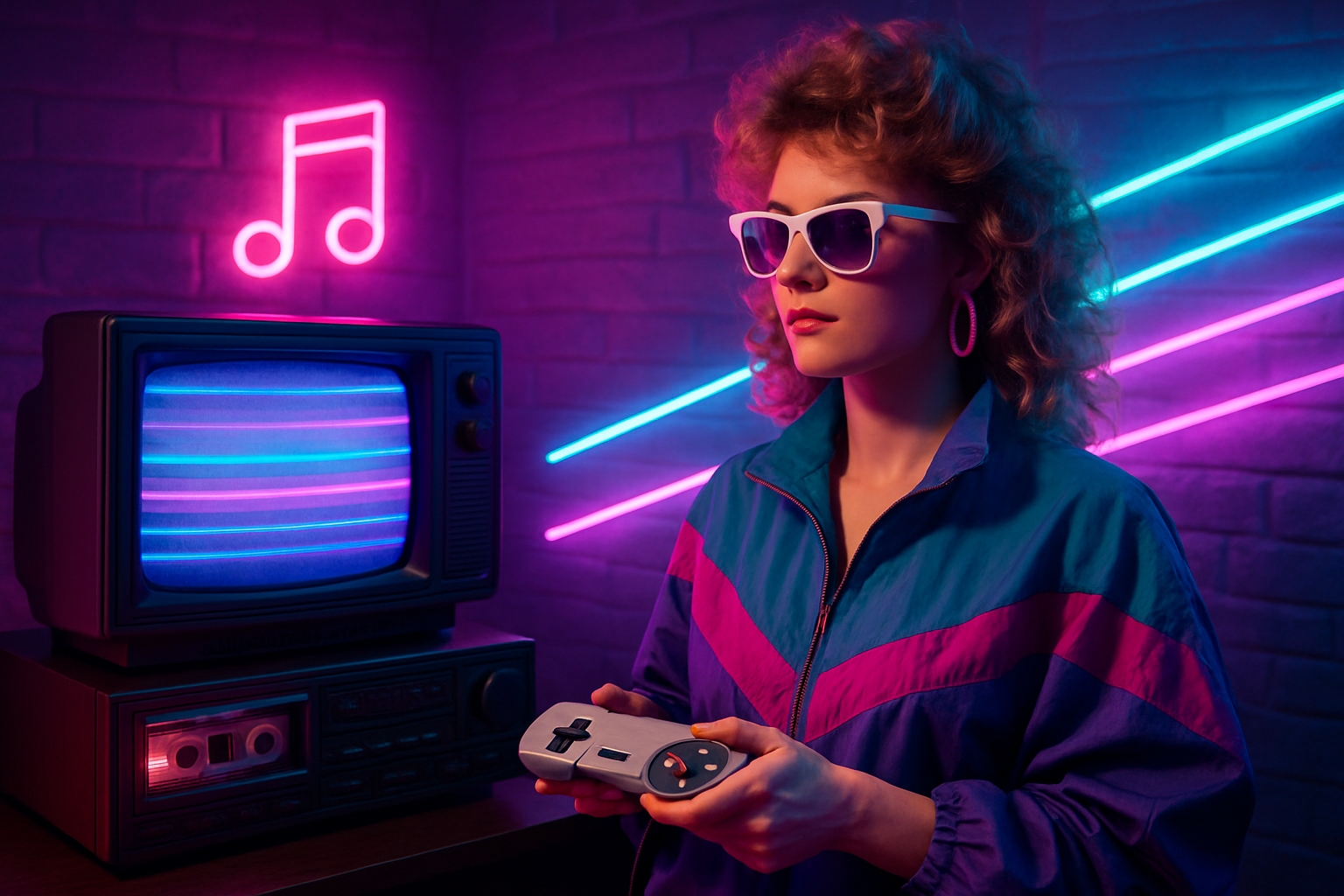Neon Nostalgia: The Vibrant Revival of 1980s Aesthetics
In a dazzling fusion of past and present, the unmistakable visual language of the 1980s is experiencing a spectacular resurgence across various artistic mediums. This neon-soaked renaissance is captivating audiences and creators alike, infusing contemporary culture with a potent dose of retro charm. From cinema and television to fashion and graphic design, the distinctive aesthetics of the Reagan era are being reinvented and reinterpreted for a new generation, sparking both nostalgia and innovation.

Digital Renaissance
In the digital realm, the 1980s aesthetic has found new life through social media platforms and digital art communities. Instagram filters and Snapchat lenses now offer users the ability to add a retro flair to their photos and videos, while platforms like TikTok have seen a surge in content creators embracing neon-tinged, synthwave-inspired visuals. This digital revival has introduced a new generation to the aesthetic pleasures of the era, sparking curiosity and creativity.
Cinematic Time Travel
The film industry has played a significant role in the resurgence of 1980s aesthetics. Movies and TV shows set in or inspired by the decade have captivated audiences with their visual flair and nostalgic appeal. Productions like Stranger Things and Ready Player One have not only recreated the look and feel of the era but have also inspired a wave of original content that reimagines the 1980s aesthetic for contemporary audiences.
Fashion Forward, Looking Back
The fashion world has wholeheartedly embraced the return of 1980s style, with designers reinterpreting iconic looks for modern wardrobes. Oversized blazers, neon accents, and statement accessories have made a triumphant return to runways and street style alike. This revival goes beyond mere imitation, as designers blend retro elements with contemporary silhouettes and sustainable materials, creating a fresh take on classic looks.
Sonic Landscapes
The music industry has also been swept up in the 1980s revival, with a resurgence of synthesizer-heavy production and retro-inspired album artwork. The genre of synthwave, in particular, has gained significant traction, with artists creating modern music that captures the essence of 1980s soundtracks and pop hits. This sonic nostalgia has expanded beyond niche audiences, influencing mainstream pop and electronic music production.
Advertising and Branding
Companies and brands have recognized the powerful appeal of 1980s aesthetics, incorporating retro elements into their marketing strategies and visual identities. From limited edition packaging designs to entire advertising campaigns, businesses are tapping into the nostalgic appeal of the era to connect with consumers. This trend has sparked debates about authenticity and the commodification of nostalgia in the corporate world.
The Psychology of Nostalgia
The widespread embrace of 1980s aesthetics raises intriguing questions about the psychological appeal of nostalgia. Researchers have found that nostalgic feelings can provide comfort and a sense of continuity in times of uncertainty. The current revival may be seen as a collective response to the complexities of the modern world, offering a temporary escape to a perceived simpler time.
Critical Perspectives
While the revival of 1980s aesthetics has been largely celebrated, it has not been without its critics. Some argue that the trend represents a lack of originality in contemporary culture, relying too heavily on recycled ideas. Others point out the potential for romanticizing a decade that, despite its visual appeal, was marked by significant social and political challenges.
The Future of Retro
As the 1980s aesthetic continues to permeate various aspects of contemporary culture, questions arise about its longevity and evolution. Will this trend eventually fade, or will it become integrated into the broader visual language of the 21st century? The ongoing dialogue between past and present in creative expression suggests that while the specific manifestations may change, the influence of retro aesthetics is likely to persist in new and unexpected forms.





